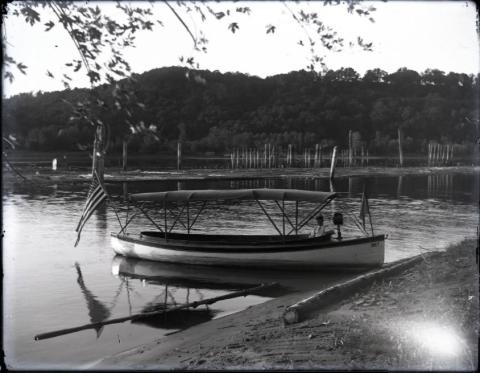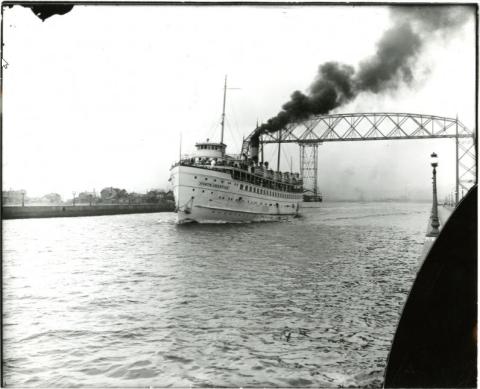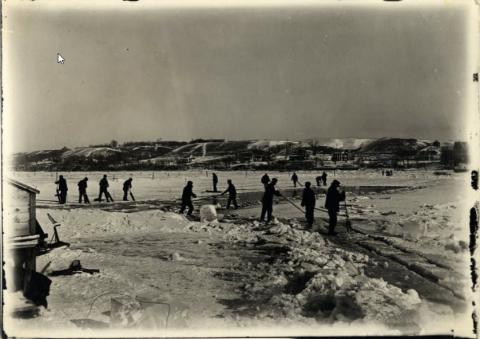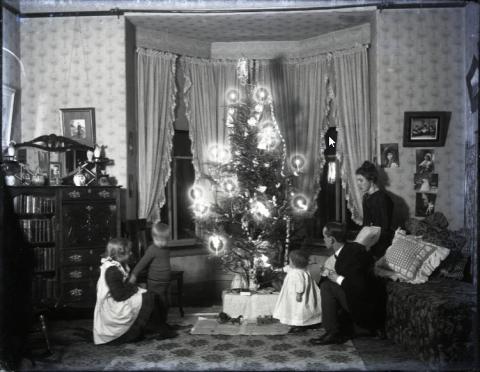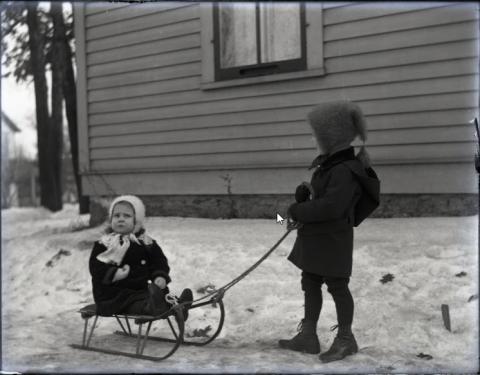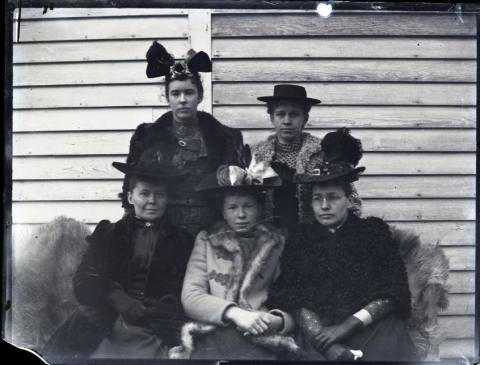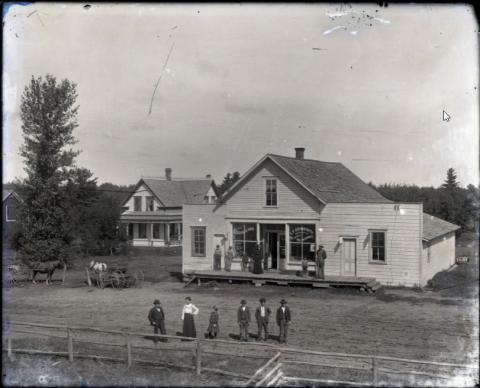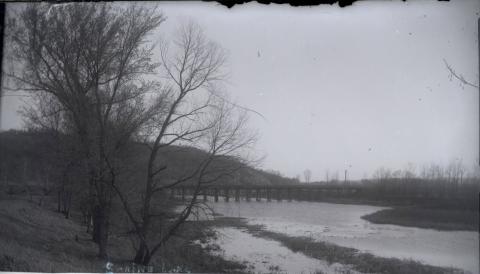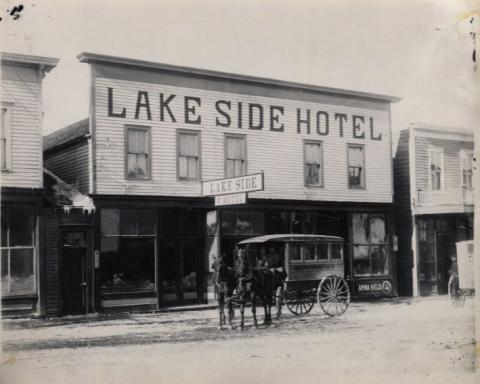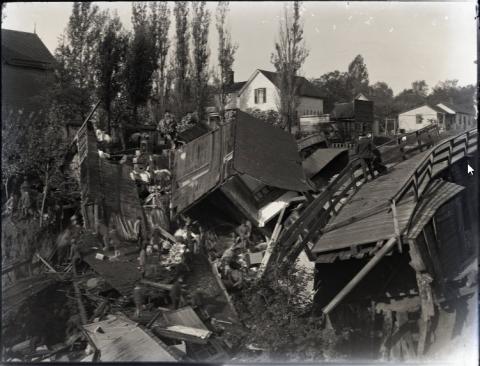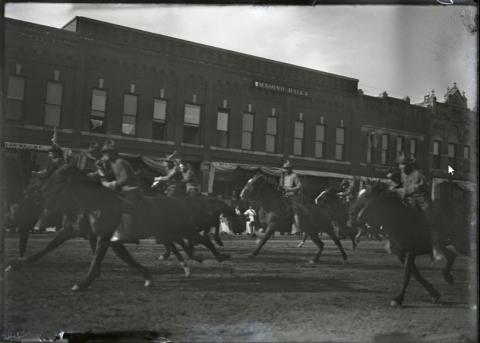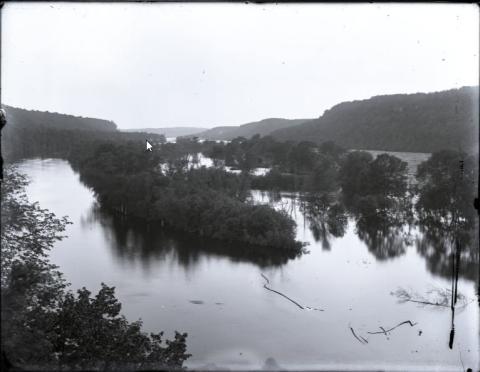Primary Source Set
by Greta Bahnemann, Metadata Librarian, Minnesota Digital Library, Minitex
Arts and Literature Format Highlight
The first glass plate negative was created in 1851 by the British inventor Frederick Scott Archer. The invention of this photographic technique resulted in an increased interest in photography. Do-it-yourself manuals cropped up during the 1860s and assisted both the amateur and professional photographer in the creation of glass plate photographs. Interest in this photographic technique eventually spread to almost every walk of life. From Queen Victoria to Matthew Brady, glass plate photography captured intimate views of royalty, scenes of war and destruction, and pastoral views of everyday life.
There are two types of glass plate negatives: wet plate and dry plate. The wet plate, developed by Archer, was produced by spreading a thin rectangle of glass with collodion, a flammable liquid made of cellulose nitrate and ether. The glass plate was then placed into a bath of silver nitrate which made the plate photosensitive. A photographer would then insert the wet plate into a camera and expose it to light to capture an image. The wet plate negative was in use from the early 1850s until the late 1880s, before being almost completely replaced by the more convenient dry plate negative process.
Richard Leach Maddox developed the first practical dry plate negative process in 1871. This technique involved fixing a light-sensitive gelatin emulsion to a glass plate. The plate was then allowed to dry before it was exposed in the camera. The dry plate process featured many of the same steps as the wet plate process but utilized different sensitizing, fixing, and development solutions. The dry plate photographic technique was used from the 1870s until the first quarter of the twentieth century, when it was then surpassed in both ease and popularity by the gelatin silver paper negative and the gelatin silver negative on celluloid roll film.
Discussion Questions & Activities
- Review some of the other Format Highlights that look at the history of photography. Reflect on how the technology of photography has changed over the years, and describe some of the advantages and disadvantages of these different photographic processes.
- What types of subjects work best with glass plate negatives?
- Can you think of something that is very fragile that could be replaced by different or new technology?
- Do you think glass plate negative photographs belong to art or to history? Explain your answer.
- Imagine that these black and white photographs are in color. How does that change your interpretation of the image?
eLibrary Minnesota Resources (for Minnesota residents)
Britannica School, s.v. "Frederick Scott Archer," accessed February 14, 2025.
Britannica School, s.v. "History of Photography," accessed February 14, 2025.
Britannica School, s.v. "Negative," accessed October 9, 2025.
Britannica School, s.v. "Technology of photography," accessed October 9, 2025.
Britannica School, s.v. "Wet-collodion process," accessed February 18, 2025.
"How were photos made in the early days of photography?" video, from Encyclopædia Britannica, accessed February 14, 2025.
Additional Resources for Research
Bahnemann, Greta. “The Preservation of Glass Plate Negatives.” WebJunction. Accessed February 14, 2025.
Caruso, Martina. “Hidden Gems: Glass Plate Negatives.” South Street Seaport Museum, 27 Nov. 2023. Accessed February 14, 2025.
“Early Photographic Formats and Processes in the Special Collections and Archives Research Center.” LibGuides at Oregon State University. Accessed February 14, 2025.
“Richard Leach Maddox.” Wikipedia, March 3, 2024. Accessed February 14, 2025.
Whitaker, Luke. “What Is a Glass Plate Negative?” Bosham Gallery. Accessed February 14, 2025.
Published onLast Updated on
